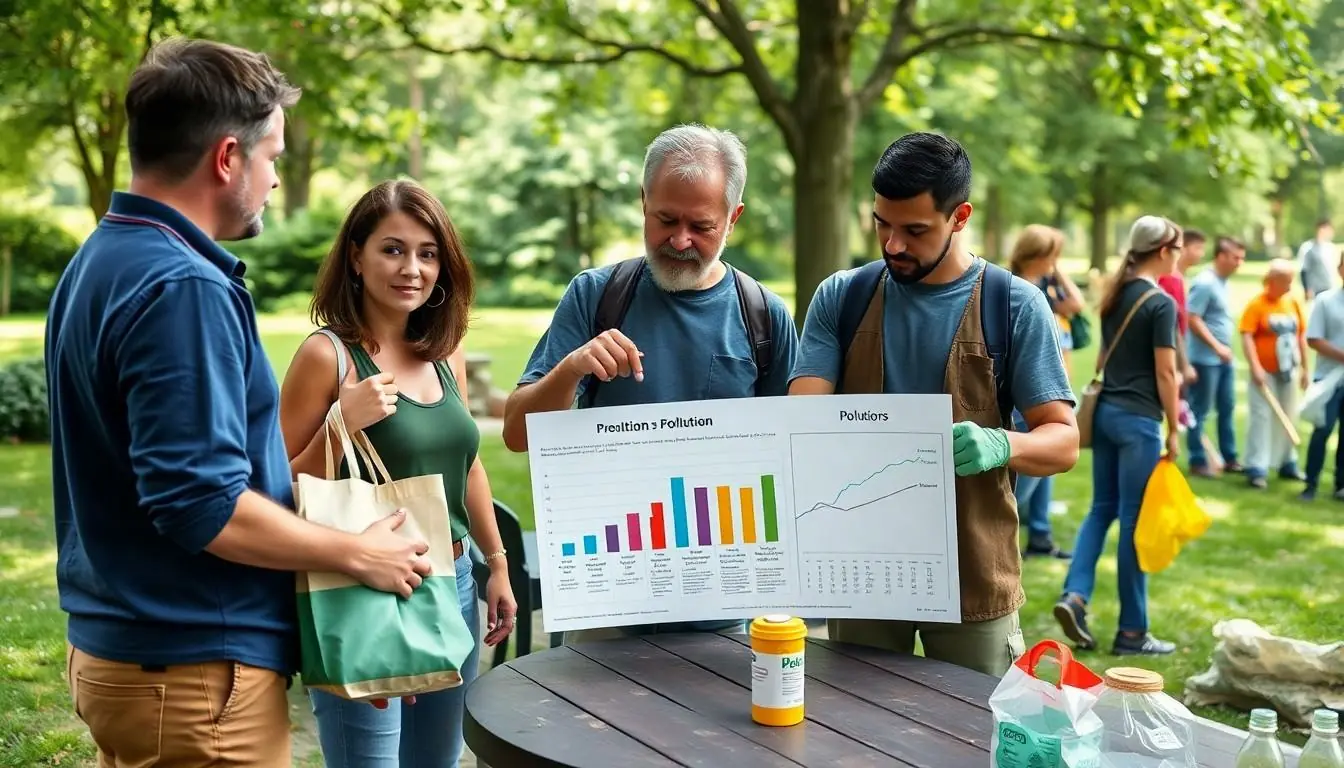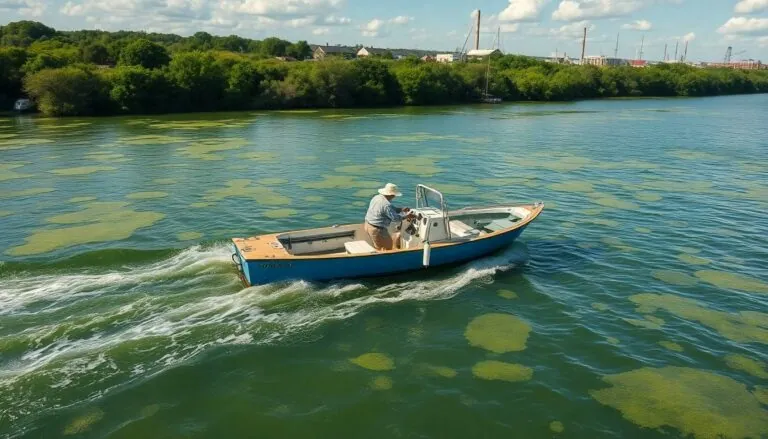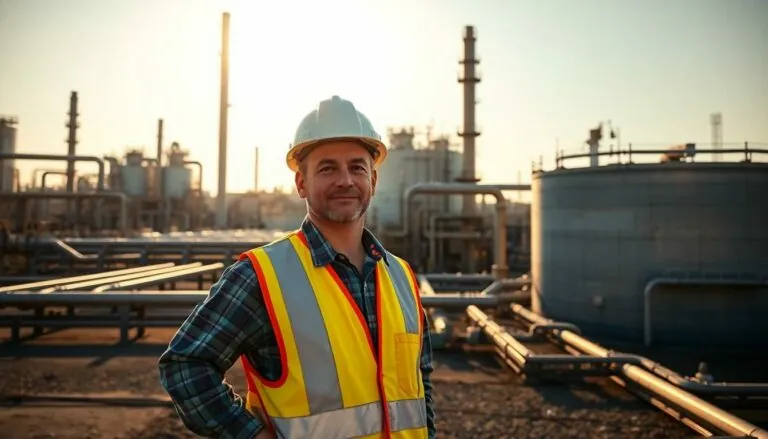In a world where plastic seems to multiply faster than rabbits, the Pollution Prevention Act emerges as a superhero in the fight against environmental chaos. This pivotal legislation isn’t just a fancy title; it’s a game changer for businesses and communities looking to reduce waste and protect our planet. Who wouldn’t want to be part of a movement that keeps oceans clean and air crisp?
Table of Contents
ToggleOverview of the Pollution Prevention Act
The Pollution Prevention Act, enacted in 1990, serves as a landmark piece of legislation that emphasizes a proactive approach to environmental protection. Its primary focus involves reducing the generation of pollution at the source, which is more effective than managing waste after its creation. This Act encourages businesses and communities to adopt methods that minimize waste and prevent harmful substances from entering the environment.
The Environmental Protection Agency oversees the implementation of the Act, providing guidance and resources for industries. Businesses can achieve compliance through various strategies such as implementing eco-friendly processes or utilizing alternative materials. Data from the EPA highlights a significant reduction in waste generation since the Act’s implementation, demonstrating its effectiveness in promoting sustainable practices.
Communities benefit from the Pollution Prevention Act as well. Through partnerships with local governments, residents gain access to programs that educate them on sustainable practices. Collaborations often yield innovative solutions tailored to specific issues like plastic pollution and hazardous waste management.
Participation in the Act allows organizations to enhance their reputation, as consumers increasingly value environmental responsibility. Numerous companies that prioritize pollution prevention report increased customer loyalty and satisfaction. Through shared goals and collective actions, stakeholders can work towards a cleaner, healthier environment.
The Pollution Prevention Act plays a pivotal role in shaping a sustainable future. Its emphasis on preventive measures provides a framework for reducing pollution while fostering cooperation among businesses, government agencies, and communities.
Key Provisions of the Pollution Prevention Act

The Pollution Prevention Act features essential provisions aimed at reducing environmental pollution. Two critical aspects involve waste reduction and the promotion of sustainable practices.
Reduction of Waste
Reducing waste stands as a primary goal of the Act. Businesses must identify and implement techniques that cut down waste generation at its source. For instance, companies can adopt more efficient manufacturing processes or utilize materials that create less waste. This emphasis on prevention has led to significant decreases in waste outputs across various industries. According to the Environmental Protection Agency, the Act has contributed to a marked decline in waste generation over the past decades. Moreover, industries participating in waste reduction often report cost savings through decreased disposal costs.
Promotion of Sustainable Practices
Promoting sustainable practices forms another cornerstone of the Act. Organizations are encouraged to adopt environmentally friendly strategies and innovative technologies. The emphasis on sustainability not only improves compliance with regulations but also enhances brand reputation. Educational programs foster awareness, helping communities embrace these practices effectively. By cooperating with local governments and stakeholders, businesses engage in initiatives that reduce ecological footprints. Research indicates that consumers increasingly support companies committed to sustainability, driving loyalty and positive community relationships.
Impact on Industries
The Pollution Prevention Act significantly impacts various industries by enforcing new standards and practices. Compliance with the Act is essential for organizations aiming to reduce environmental footprints.
Compliance Requirements
Businesses must follow specific compliance requirements outlined by the Pollution Prevention Act. Organizations need to assess their pollution sources and develop strategies to minimize waste generation. Reporting progress is crucial; industries must submit information to the Environmental Protection Agency to demonstrate adherence. Those failing to meet the standards risk penalties and regulatory scrutiny. The Act fosters accountability, encouraging industries to maintain records of their pollution prevention efforts.
Benefits for Businesses
Industries that comply with the Pollution Prevention Act enjoy several advantages. Cost savings materialize through reduced waste disposal fees and streamlined operations. Eco-friendly practices can attract environmentally conscious consumers, fostering brand loyalty. Competitive positioning also improves, as consumers increasingly prefer brands committed to sustainability. Organizations often enhance their reputations while potentially accessing incentives and funding for green initiatives. The shift towards sustainable practices leads to innovation, opening doors to new markets and opportunities within environmentally friendly sectors.
Role of State and Local Governments
State and local governments play a crucial role in implementing the Pollution Prevention Act. They develop and enforce regulations that align with the Act’s goals, ensuring that pollution reduction strategies are integrated into local practices. Collaboration between levels of government fosters a consistent approach to environmental protection.
Many states establish specific programs to promote pollution prevention. These programs often include training sessions for businesses on sustainable practices, guiding them to identify waste reduction techniques. Local governments can also create incentives for organizations adopting eco-friendly methods, enhancing participation in pollution prevention initiatives.
Monitoring and reporting systems are essential responsibilities for state and local authorities. They track compliance with regulations and evaluate the effectiveness of pollution prevention strategies. Evaluation results help inform future policy decisions, ensuring targeted improvements.
Public awareness campaigns organized by local governments educate citizens on pollution prevention. Successful initiatives often encourage community engagement, motivating individuals to adopt sustainable habits. These efforts create a culture of environmental responsibility within communities.
Additionally, partnerships with businesses enhance resource sharing and innovation. Government agencies often collaborate with industries to develop new technologies that reduce waste. By supporting research and development, state and local governments help businesses discover effective pollution prevention methods.
Ultimately, the proactive involvement of state and local governments ensures the goals of the Pollution Prevention Act are met. Their distinct actions unite businesses and communities towards the common goal of reducing environmental pollution and fostering sustainable practices.
Challenges in Implementing the Pollution Prevention Act
Implementing the Pollution Prevention Act presents several challenges for businesses and governments. Resources for compliance can be limited, especially for small businesses that may struggle with the costs of new technologies and practices. Lack of awareness about the Act and its benefits can hinder participation, as many organizations do not understand the long-term advantages of pollution prevention.
Regulatory complexity also complicates adherence. Organizations face varying state and local regulations, which can differ significantly from federal standards. Navigating this intricate web of compliance requirements may overwhelm some businesses, leading to inconsistent implementation of pollution prevention strategies. Additionally, tracking and reporting progress to the Environmental Protection Agency demand significant time and effort, often diverting resources from core business operations.
Cultural resistance within organizations can pose another obstacle. Employees accustomed to traditional practices might be reluctant to adopt new, eco-friendly methods. Engagement and training programs are essential to foster a shift in mindset, yet securing buy-in from staff at all levels can take time.
Data availability presents a further challenge. Many companies lack access to accurate data on pollution sources and waste generation, making it difficult to develop effective reduction strategies. Innovation is crucial, yet the pace of technological advancement can vary across sectors, slowing progress in some industries.
Collaboration also proves essential. Partnerships among businesses, local governments, and non-profits can improve resource sharing and knowledge exchange. Encouraging cooperative efforts creates synergies, maximizing the impact of pollution prevention initiatives. Overall, addressing these challenges requires commitment and a proactive approach from all stakeholders involved in the Pollution Prevention Act’s implementation.
The Pollution Prevention Act represents a vital step toward a sustainable future by prioritizing pollution reduction at its source. Its emphasis on proactive measures encourages businesses and communities to innovate and adopt eco-friendly practices. As organizations navigate the challenges of compliance, the benefits of participating in this initiative are clear. Cost savings, enhanced brand reputation, and increased customer loyalty are just a few advantages that come from embracing sustainable strategies.
The collaborative efforts of state and local governments alongside the private sector play a crucial role in achieving the Act’s goals. Together, they can foster an environment where innovation thrives and communities engage in sustainable habits. By addressing the challenges and leveraging the opportunities presented by the Pollution Prevention Act, stakeholders can contribute to a cleaner and healthier planet for future generations.





